Soft Dorothy Software — Shareware Projects
68K Emulation
There are emulators that run on various modern operating systems — they can emulate early Macintosh hardware and run early Mac software. I got the idea in my head to try to recover to the degree I could the files I used to create my early shareware games that I wrote on a Macintosh Plus from around 1988 to around 1992 or so. I also wanted to recreate the environment I used — the tools need to edit, compile and build the games as well. I would hopefully gather these pieces together onto “disk images” that a modern emulator could mount.
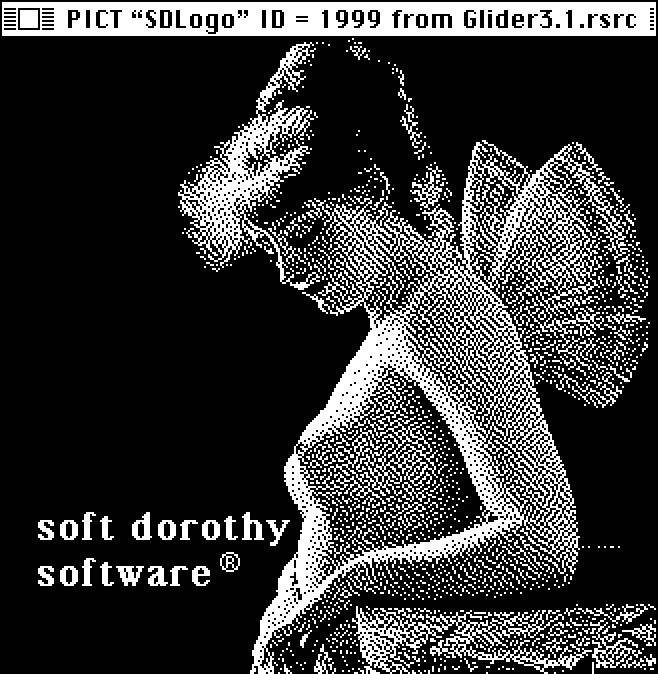
In short, I wanted to see if I could build a time machine and go back 35 or so years.
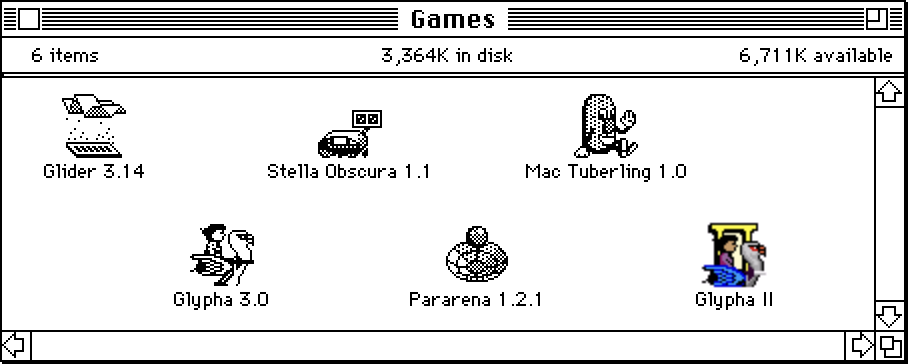
Although getting the emulators set up and running can feel a bit like assembling an IKEA dresser, in the end the emulators were amazing and work as advertised.
Further, the build tools — THINK Pascal, THINK C, ResEdit — could be found by checking various “abandonware” sites like the amazing Macintosh Garden.
I remember first finding my commercial games hosted on Macintosh Garden — considered “abandonware”. Wut? I’m cool with it now though. Actually was cool with it pretty quickly — just kind of momentarily sad.
No, the larger trouble was more on my end — trying to comb through various hard drives I have trying to find salvageable files to use to recreate these projects.
At some migration point in the past, all the resource forks of the older files that I had were stripped away when I moved them from one file system to another. If I had been smart, I would have binhexed or zipped them first. But, cluelessly, I just drag-copied them over and many of the files came over as zero bytes.
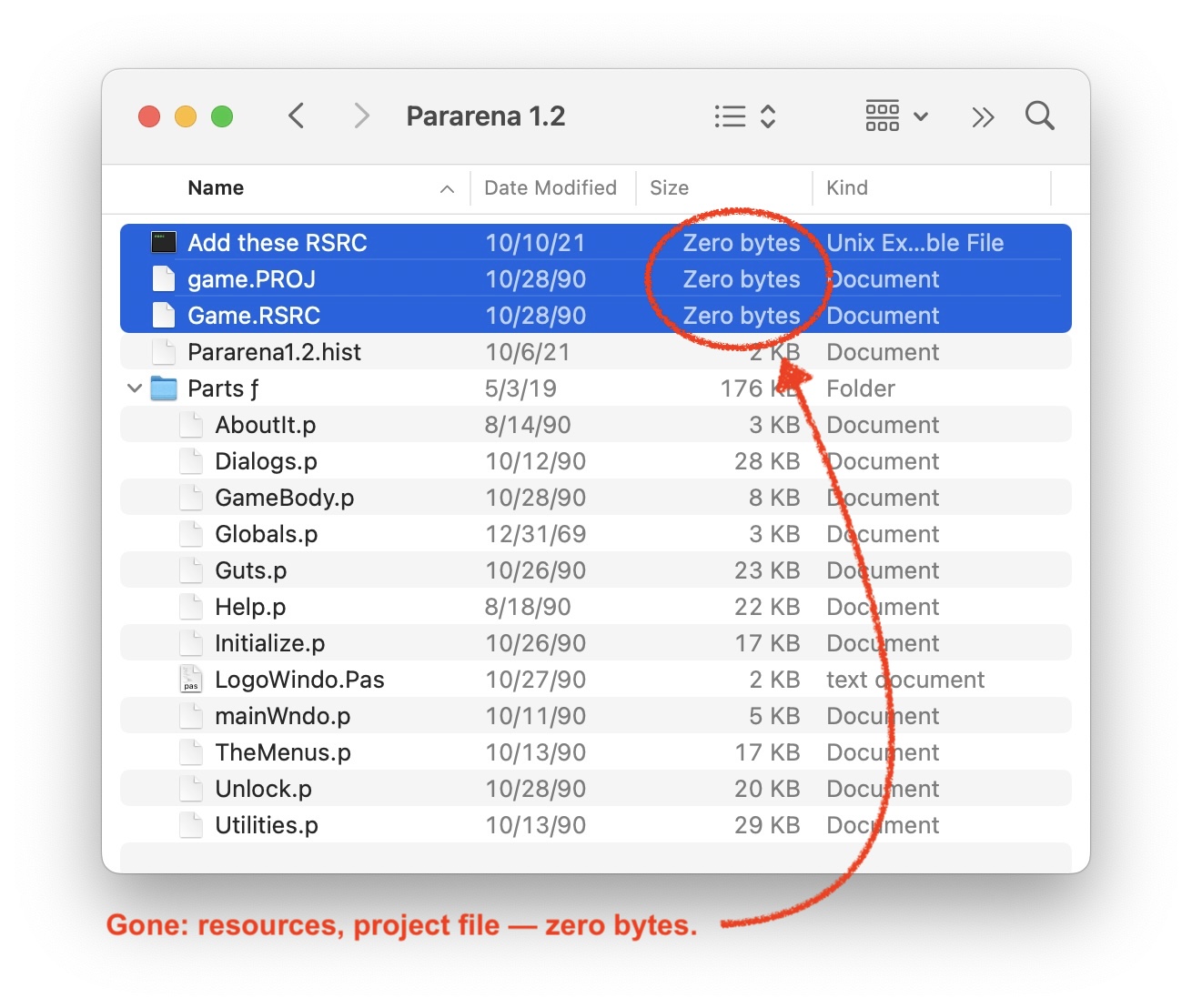
If resource forks are an alien concept to you, the old Macintosh OS could have both resource and data forks for each file — the resource fork being a kind of compendium of assets like images, sounds, strings, UI templates. When Mac OSX came along, no doubt how to deal with these pesky resource forks became a constant thorn in their side.
I thought I had a few ZIP disks somewhere with, hopefully, my old sources. Nope. Could not find either the ZIP disks or the ZIP drive.
The Thirty-Five Year Old Hard Drive
I wondered then about the 10 MB external SCSI hard drive that I have hung onto — it was my original workhorse for my Macintosh Plus computer. I also still have my original Macintosh Plus computer (which I have had to re-cap and reflow the solder where the power connects to the motherboard in order to get it up and running again).
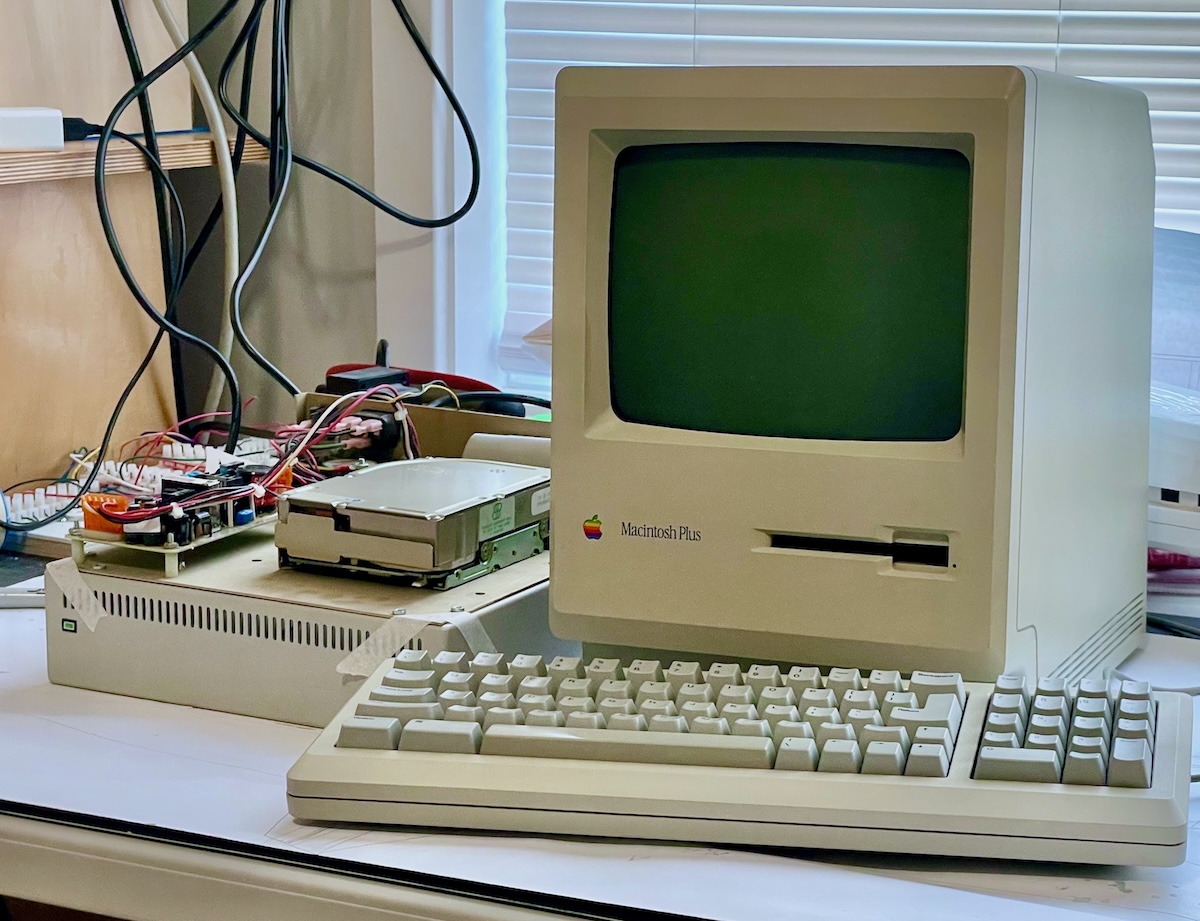
The hard drive did not function. I heard the fan, saw the power LED come on to suggest the power supply was working (?) but no clicking sound to indicate that the head was seeking data on the disc platters.
I first checked the wires coming from the power supply and determined that the 5V and 12V were present and the problem was likely in the drive itself.
I think I saw one of those restoration YouTube videos where the guy opened the hard drive and physically rotated the parts to perhaps unbind them. Why not, I thought? In fact, that turned out to be precisely what the doctor ordered.
The arm itself was stuck out on the platter. When I forced it to move, there was a slightly discolored area on the platter beneath where the head had been floating. “Probably lost a few bytes there”, I thought. I also made sure the platter itself would rotate.
When I replaced the cover on the drive, I powered it up again and the Macintosh Plus actually booted of the hard drive.
And it turned out I did in fact have a handful of my shareware projects on the drive. (And no missing bytes that I am aware of.)
Blue SCSI
I had a BlueSCSI device that I had put together from a kit some years back — this device will emulate a SCSI hard drive using a lowly MicroSD card as storage. Chained to the external SCSI hard drive, I now had an easy way to get my files from the old SCSI hard drive. Just copy them to the HFS-initialized MicroSD card.
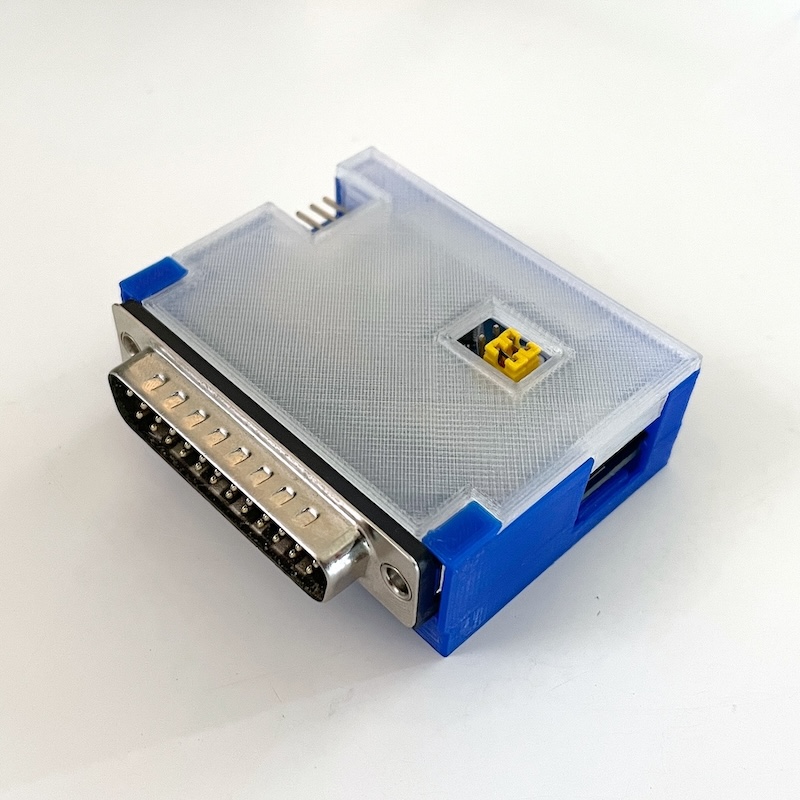
Pulling out the MicroSD card I had to find an older (but not too old) Mac that still recognized HFS volumes so I could mount the MicroSD card and access the files on a modern machine. An iMac I had running MacOS X, High Sierra did the trick. Thirty-five years later, the files made it intact to the cloud.
That noisy, chunky hard drive was hauled from Kansas to California and then to Nebraska — probably to a dozen different homes/residences over those years.
The bad news is that there were only a fraction of my projects on the old hard drive. The good news is that I found on another hard drive where I had compressed and archived those coveted ZIP disks I had first been trying to locate. Likely I had at some point done this, then tossed the ZIP disks and ZIP drive.
All told then I had recovered a large portion of the sources and other files that I would need to reconstruct the shareware
projects. If a resource file or project file were still missing, I was able to create new projects using THINK Pascal, and
could re-create the resource files by opening the application with ResEdit and copying all the resources over to a new file
(sans the CODE and DATA resources that are usually part of the executable).
Archived
I don’t know exactly why I was motivated to try and archive the work done from that period of my life. Maybe because I turned sixty this year and have been feeling nostalgic? Or maybe because I’m tired of hauling that hard drive around and just wanted some closure on all the loose bytes I had lying around. I would not have thought anyone else, other than perhaps family, would be interested in these files but I’m always surprised to find strangers out there that seem eager to preserve these ephemeral decades of computing’s early “Wild West”.
And so as such I have put all the emulator-ready disk images in a GitHub repo here. Additionally, I have begun collecting my commercial Casady & Greene games as disk images here.
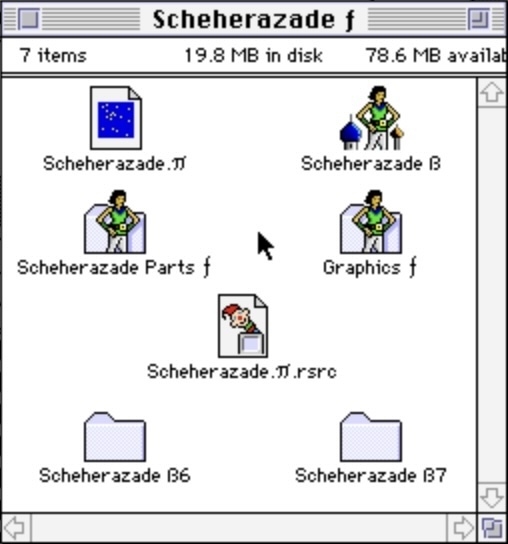
For me, maybe the cooler thing still to come though will be a collection of the abandoned games I started and, for various reasons, let lie on the cutting room floor.
